Bombay is a captivating city. The streets around its crumbling grandiosity are crawling with crowds and crammed with traffic and the wet hot air carries the rich aromas of its twelve million lives. At the Southern tip of the city, the Colaba and the Fort districts, are suffering the best of the colonial hangover. On every corner is yet another beautiful reminder of the long British occupation; there are countless grand buildings, wide boulevards and antiquated coffee houses. The area definitely warrant full day of exploration. I did a self guided walking tour based on the advice of my lovely host. Below are the sights I and (more importantly), cafés I visited.
I started my day at Kyani and Co., established in 1932, is a legendary Bombay institution. Iranian immigrants who moved to India in the 19th century opened many similar cafés in the city and Kyani and Co. is one of the oldest that remains. Sitting beneath its high ceilings in its rickety old chairs, its easy to imagine the café’s rich history. The place is famous for its bun maska (buttered bun), chai (tea) and keema pav (minced mutton served with soft white bread).
2) Chhatrapati Shivaji Terminus
The juxtaposition of India’s bustling wildness against the backdrop of this breathtaking European architecture makes the Chhatrapati Shivaji Terminus (formerly Victoria Terminus) a site to behold. The train station is a UNESCO World Heritage Site, in recognition of its amazing Victorian Gothic Revival architecture. As well as admiring it from afar, it’s worth getting caught up in the crowds to take a look at the place from the inside.
3) Crawford Market
There is nothing like a good market. This is one of the most famous in Bombay and well worth a wander. It’s overwhelmingly crowded with people, products and provisions. The piles of fragrant fresh fruit and bustling street food stands swarm with flies and with people. The sales tactics in Mumbai are much less pushy than you’ll find at markets in Northern India so, it’s not an unpleasant place to browse and people watch.
4) Mumbai Police Commissioner’s Office (Mumbai Crime Branch)
Right right across from Crawford Market, this building was (built in 1896), can be admired for its Gothic architecture
5) St. Xavier’s College
More than the college itself, I enjoyed walking down the street it’s on. The big trees keep it cool and the mood is intellectual. I didn’t go onto the campus but apparently the Heras Institute of Indian History and Culture is worth seeing. There is also a museum in the college premises and societies like the Bombay Local History Society and the Amateur Astronomers’ Association (Bombay) which are open to members of the public as well as students.
6) Municipal Corp. Greater Mumabi
This is another gothic building to gawk at. It was designed by the same architect who designed the Chhatrapati Shivaji Terminus (F.W. Stevens).
This lovely little bookshop has a great selection of books of all sorts and in the back, you can crack the spines of your purchases over a coffee, sweet or meal. The café space is not nearly as nice as the bookstore part of the shop and it’s quite expensive so unless you’re famished or craving the AC, I’d recommend moving on to one of the other lovely cafés in the area for sustenance on your day out. There are some nice reading nooks in the shop itself as well, however, you’re not allowed to bring food and drink into those areas.
8) Mumbai GPO
The General Post Office building was built in 1913 in an Indo-Saracenic style. It is the largest post office in India with 101 counters to cater to customers.
9) JJ Fort Boy’s Highschool
Inside the campus, you can see Dean’s Bungalow where Rudyard Kipling was born to John Lockwood Kipling (then principal of the School). There is a plaque commemorating the important birth.
I am disappointed that by the time I reached this point in my walking tour I was no longer hungry enough to eat at this iconic cafe. Britannia & Co. is another of the city’s Iranian cafés which are helping to preserve some of the city’s Zarathushti heritage and history. Most of the Irani cafés in Bombay are over 100 years old and are well preserved evidence of a bygone era. Most were established by Iranian families who settled in Bombay after fleeing religious persecution in their country. They were aided in their flight to the west coast of India by the Parsees of Bombay. Thus, the Parsee housing colonies in Bombay’s Fort district became home to many Irani Zarathushti refugees. Because most of these refugees didn’t have the capital to establish themselves in trade, banking and industry many established modest cafés and bakeries. The food and the egalitarian environment of these historical Iranian eateries still portray the values embodied by this culture.
If you are in the mood for more food at this point, the berry pulao and the raspberry drink come highly recommended. Berry pulao is an adaptation of the Iranian zereshk (barberries or Berberis vulgaris) polo (cooked rice). The rice dish is usually made with meat (chicken or mutton) and berries which have a slightly tart flavour.
11) Horniman Circle and Gardens
Benjamin Guy Horniman was an Irish journalist. He wrote for the Bombay Chronicle and was known for his vocal opposition to the British rule during India’s struggle for Independence. The gardens are a lovely spot to sit and escape into a little greenery. There is a great variety of plants and trees and a small fountain in the center. The benches are mostly occupied with business men taking a moment out in their days to munch on all sorts of delicious street food delicacies. The buildings around the garden form a semi circle crescent around the garden.
12) Asiatic Society Mumbai Town Hall
As you step out the Horseman Circle Gardens you’re confronted by this gorgeous white Greco Roman style building, boasting eight Doric columns and thirty stone steps leading up to the Library. Built in 1930, this is a lovely building is home to the Asiatic Society of Mumbai. I found myself here in the early evening and the light of the low hanging sun on the white columns was phenomenally gorgeous. The library here is home to the two original copies of Dante’s Divine Comedy, five caskets containing the relics of the Buddha found at Sopara near Mumbai and many rare and ancient manuscripts. When I visited, it was just after closing time but the kind guard let me step inside to at least catch a glimpse of the many low, dusty shelves in the crowded dim hall.
13) St. Thomas Cathedral
This is likely one of the oldest British buildings in Mumbai. Its construction was completed in 1718. The Churchgate railway station got its name because of the presence of this cathedral which is located close to the Fort’s gate. It’s a quaint and modest little church, and contrasts with the grandiose buildings that surround it.
Khala Goda is a very tiny, very hip little pocket. There are very nice (very expensive) boutiques and hipster shops tucked away in the crooked lanes behind the main thoroughfare. This café fits the bill being tiny and hip.
15) Flora Fountain
Flora is the Roman Goddess of beauty and prosperity. The fountain was built in 1869 using Portland stone. It was built in memory of Sir Bartle Frere, Governor of Bombay at the point where the Fort’s Church Gate once stood.
16) Bombay High Court
The building was built in 1878. The statues of Justice and Mercy can be seen on top of the two octagonal towers west of the central tower. Only the Judges are allowed to enter from the main entrance. All others enter through the rear entrance on the east of the building. Inside, the dusty, dark, overcrowded hallways are piled with rolls and rolls of files. In each room, the desks are overwhelmed with impressive piles of papers and file folders, the employees literally buried under their work. It’s incredible that anyone is able to navigate through the madness of those stacks.
17) Prince of Whales Museum
This is one of the main museums in Mumbai. It has a huge collection of variety of artefacts. There are old stone and marble sculptures from ancient temples, Assyrian Bas Reliefs, seals and toys from the Indus Valley Civilisation, European and Indian Miniature Paintings, a huge porcelain collection, Tibetan and Nepalese Buddhist art, etc. I spent a few hours wandering through he odd collection and wasn’t overly impressed. It’s worth a look from the outside but I would give this museum a miss.
18) David Sassoon Library
There’s not too much to see here beyond the pretty exterior of the building because the library is members only. Apparently there is garden behind it and has some very comfortable easy chairs on the verandah on the first floor however, I didn’t go inside.
I’ve attached a couple of maps that track my walking tour through this beautiful, historical pocket of Bombay. I combined the two routes to make my way around visiting each sight in the order they’re written above. Everything is quite close together in the neighbourhood so if you don’t mind a lack of efficiency, even wandering will take you past most of these buildings and sights.
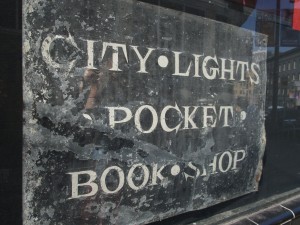 Founded in 1953 by poet Lawrence Ferlinghetti and Peter D. Martin, City Lights is a landmark independent bookstore and publisher. Browse their wonderful collection downstairs, or head upstairs to the sunny Poetry Room, to delve into the piles of freshly published poetry.
Founded in 1953 by poet Lawrence Ferlinghetti and Peter D. Martin, City Lights is a landmark independent bookstore and publisher. Browse their wonderful collection downstairs, or head upstairs to the sunny Poetry Room, to delve into the piles of freshly published poetry.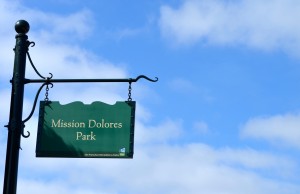 During the summer months the grassy slopes of Dolores park are teeming with people from all walks of life. It’s the perfect place to picnic and people watch. Stroll down to Bi-Rite Creamery, just around the corner, to beat the heat with some delectable ice cream!
During the summer months the grassy slopes of Dolores park are teeming with people from all walks of life. It’s the perfect place to picnic and people watch. Stroll down to Bi-Rite Creamery, just around the corner, to beat the heat with some delectable ice cream!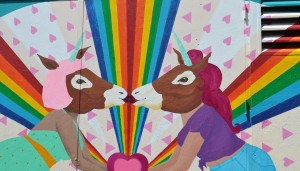 The mission district is home to many small streets, splashed from top to bottom with vibrantly coloured murals. These outdoor galleries are well worth a wander.
The mission district is home to many small streets, splashed from top to bottom with vibrantly coloured murals. These outdoor galleries are well worth a wander. San Fran has the largest Chinatown outside of Asia. There’s tons of culture, food, and history to be discovered in this bustling neighbourhood.
San Fran has the largest Chinatown outside of Asia. There’s tons of culture, food, and history to be discovered in this bustling neighbourhood.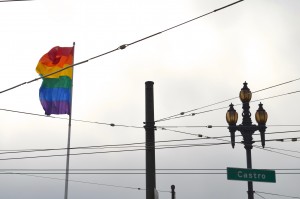 The Castro Theatre, built in 1922 is worth a visit, even just to see the building. The exterior is designed in a style reminiscent of a Mexican cathedral and inside the decor has flavours of Spanish, Oriental, and Italian influence. They often screen classic movies, cult classics, and host singalongs.
The Castro Theatre, built in 1922 is worth a visit, even just to see the building. The exterior is designed in a style reminiscent of a Mexican cathedral and inside the decor has flavours of Spanish, Oriental, and Italian influence. They often screen classic movies, cult classics, and host singalongs.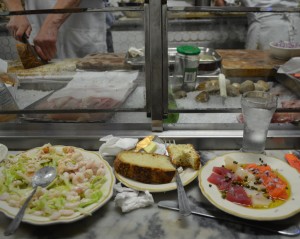 Dubbed “the best place to eat in America” by Lucky Peach author Chris Ying, this hidden gem has been feeding San Franciscans gorgeously fresh, unapologetic seafood for over a hundred years. The only place to sit is the bar, where you are served by a motley crew of white aproned staff who double as line cooks, shucking your oysters, preparing your heaping plates of simply prepared crab, prawns, shrimp, and lobster, and masterfully slicing your sashimi. There are no white table cloths, and the rustic sourdough bread is haphazardly cut into uneven chunks, but the “no-frills” lunch counter allows the food to speak for itself. Expect to wait – the line usually runs up the street.
Dubbed “the best place to eat in America” by Lucky Peach author Chris Ying, this hidden gem has been feeding San Franciscans gorgeously fresh, unapologetic seafood for over a hundred years. The only place to sit is the bar, where you are served by a motley crew of white aproned staff who double as line cooks, shucking your oysters, preparing your heaping plates of simply prepared crab, prawns, shrimp, and lobster, and masterfully slicing your sashimi. There are no white table cloths, and the rustic sourdough bread is haphazardly cut into uneven chunks, but the “no-frills” lunch counter allows the food to speak for itself. Expect to wait – the line usually runs up the street.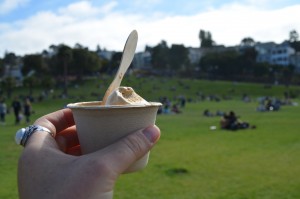 The salted caramel ice cream at Bi-Rite creamery is something to write home about. Everything is made by hand, on site – the ice cream itself and the many delicious chewy bits (brownies, peanut brittle, marshmallows). The fabulous flavours and perfect texture of this small batch ice cream draws a crowd daily – expect to wait in the long line up that usually forms around the block of Bi-Rite’s small shop front. Hop over to Dolores Park to join the crowds sitting on the grassy slopes to savour your delicious cold dessert.
The salted caramel ice cream at Bi-Rite creamery is something to write home about. Everything is made by hand, on site – the ice cream itself and the many delicious chewy bits (brownies, peanut brittle, marshmallows). The fabulous flavours and perfect texture of this small batch ice cream draws a crowd daily – expect to wait in the long line up that usually forms around the block of Bi-Rite’s small shop front. Hop over to Dolores Park to join the crowds sitting on the grassy slopes to savour your delicious cold dessert.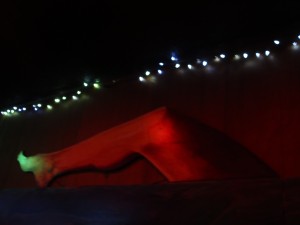 Don’t be deterred by the dark, divey, grimy interior. This is a wonderful spot for a drink any night of the week. They’ve got great happy hour specials, and a gorgeous back garden/patio and a unpretentious, welcoming neighbourhood feel. Head to El Rio at 5:30 any Friday night for free oysters on the half shell! Wash them down with the $4 beer or well drink.
Don’t be deterred by the dark, divey, grimy interior. This is a wonderful spot for a drink any night of the week. They’ve got great happy hour specials, and a gorgeous back garden/patio and a unpretentious, welcoming neighbourhood feel. Head to El Rio at 5:30 any Friday night for free oysters on the half shell! Wash them down with the $4 beer or well drink.